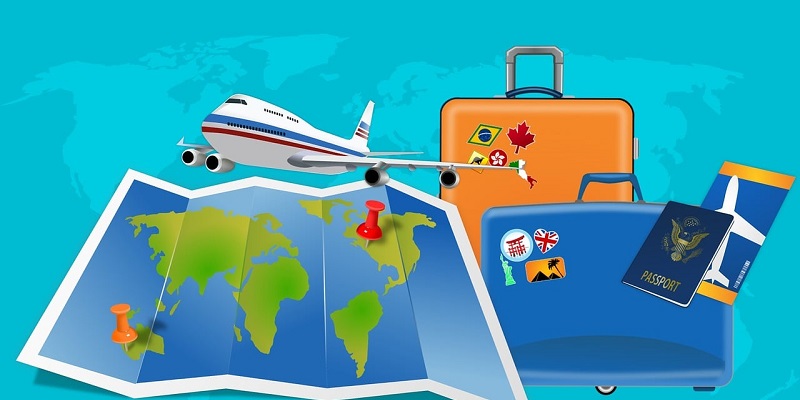In the digital age, email remains a powerful tool for communication, and the travel industry is no exception. In 2022, South Africa’s largest digital messaging platform, Everlytic, sent over 3.9 billion travel-related emails. Harnessing the power of data, Everlytic conducted a comprehensive study to uncover the secrets behind successful travel emails. By incorporating behavioral insights, identifying optimal timing, and utilizing persuasive language, marketers can boost engagement and achieve unparalleled results.
Incorporation of Behavioral Insights
Connecting with travelers on a personal level is key. Everlytic’s research revealed that travel emails that incorporated behavioral insights were the most effective. By analyzing user preferences, interests, and past behaviors, marketers can tailor their content and offers to meet the unique needs of each recipient. From personalized recommendations to targeted discounts, these insights make emails more relevant, thus enhancing their effectiveness.
Timing of Email Sending
Timing is everything, and the study found that the most successful travel emails were sent mid-morning at the beginning of the week. Capitalizing on the moment when recipients are most receptive, marketers can increase open and engagement rates. By strategically choosing the right time to deliver travel emails, brands can maximize their impact and capture the attention of potential travellers.
Use of Subject Lines with Imperatives
In an era of information overload, captivating subject lines play a crucial role. Everlytic’s study indicated that subject lines using imperatives achieved the highest open rates. By using persuasive language and creating a sense of urgency, brands can entice recipients to open their emails and explore the exciting travel opportunities within.
Visual Language and Non-People-Based Imagery
Visuals are powerful tools for capturing attention and stirring emotions. The research showed that travel emails using non-people-based imagery increased interest and engagement. By utilizing captivating landscapes, iconic landmarks, or enticing destinations, brands can transport recipients to their dream locations, sparking their imaginations and driving greater interest in their offerings.
Alliteration and Superlative Adjectives in Brand Writing
Crafting persuasive brand writing requires creativity and linguistic finesse. Everlytic’s study demonstrated that the use of alliteration and superlative adjectives makes brand writing more persuasive and boosts engagement. By employing language that flows melodiously and showcases the exceptional qualities of travel experiences, marketers can captivate readers’ attention and inspire them to take action.
Persuasion and Engagement Boosting
Words hold immense power, and the study found that the language of urgency drives better click-through engagement rates. By creating a sense of scarcity, emphasizing limited availability, or highlighting time-limited offers, travel marketers can instill a fear of missing out and spur recipients to take immediate action. Effective persuasion techniques can nudge potential travelers towards making bookings or exploring further details.
Trends in Travel Sales Communications
Pricing plays a pivotal role in travel decisions, and Everlytic’s research identified trends in effectively showcasing prices. Placing the price point below the mailer visuals helps maintain the visual appeal while providing essential information upfront. Framing discounts using ‘up to’ percentages stimulates curiosity and enhances the perceived value of the offer. Additionally, presenting offers with a struck-through original cost highlights the savings, making them more attractive to recipients.
In the competitive travel industry, presenting discounts can be a game-changer. Incorporating ‘up to’ percentages in discounts acts as a powerful incentive, making potential travelers eager to discover their potential savings. This approach not only enhances engagement but also instills a sense of value and opportunity in the minds of recipients.
Presentation of Offers with Struck-Through Original Costs
Visual cues are vital, and Everlytic’s study discovered that presenting offers with a struck-through original cost effectively highlights the value of discounted rates. By visibly showcasing the reduction in price, brands can make their offers more appealing, increasing the likelihood of conversions and bookings.
Impact on Click-Through Rates
Urgency is a potent motivator, and the study confirmed that the language of urgency in travel emails drives better click-through rates. By creating a sense of urgency through limited-time promotions, exclusive deals, or impending expiration dates, marketers can prompt recipients to click on call-to-action buttons and explore their travel options further.
Multiple Destination Options with a Single Call-to-Action Button
Choice overload can often deter potential travelers. Yet, Everlytic’s research revealed that travel sales communications offering multiple destination options but with a single call-to-action button achieved the highest engagement. This streamlined approach simplifies decision-making for recipients, guiding them towards their desired destinations without overwhelming them with numerous options.
Through Everlytic’s comprehensive study, it is evident that effective travel emails require a combination of strategic tactics. By incorporating behavioral insights, perfecting timing, using persuasive language, and embracing design trends, travel marketers can optimize their email campaigns for maximum engagement and conversions. To stand out in the crowded inbox, it is crucial to continually adapt strategies based on consumer behavior and preferences. By unlocking the secrets of successful travel emails, brands can inspire wanderlust, fuel travel dreams, and ultimately drive their business forward in the ever-evolving travel industry.

